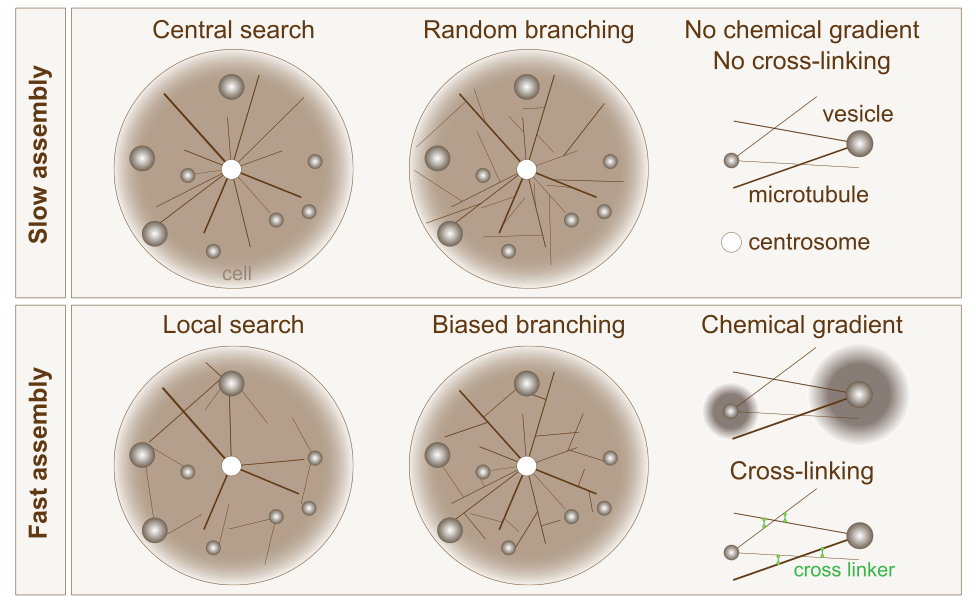
Paper Hunting for vesicles and chromosomes in press (Biophysical Journal)!
The remarkable property of microtubules is a stochastic alternation between their growth and shrinkage, termed dynamic instability, which has been shown to be vital in their role in capturing and arranging cellular organelles in an orderly configuration, with the most striking examples being the reassembly of the Golgi complex after cell division, rapid aggregation of the pigment granules in fish melanophores, and congression of the chromosomes in the mitotic spindle. How this mechanism of search and capture, which was proposed 40 years ago, functions in various cellular contexts is an exciting area of research. Originally, the search-and-capture model described only microtubules as growing in a random direction, followed by their rapid shrinking and then re-growing in a different direction. This basic behavior was later augmented by a plethora of other mechanisms, such as microtubule branching, interactions with molecular motors, cross-linkers, and growth-modulating gradients, as well as microtubule pivoting, all of them aiding a more successful search. MajaNovak_2025
